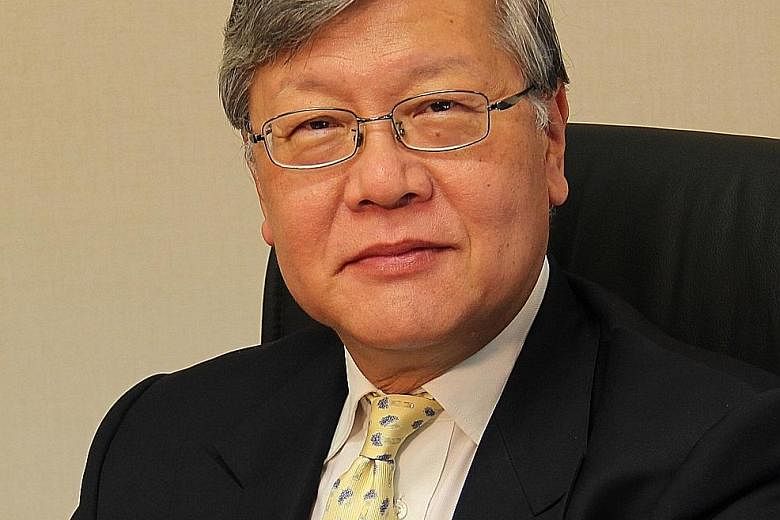Those of us who witnessed the founding of Asean in August 1967 could not have imagined how much it would achieve in the last 50 years.
Asean was born literally out of the ashes of colonialism and the Vietnam War. It started as a security pact, but gradually evolved into an economic and financial community that is not yet a cultural common, mainly because of its celebrated diversity.
Today, Asean comprises 10 countries, covering a land area of 4.4 million sq km, 3 per cent of the global total, with a population of over 625 million, or just under 9 per cent of the world population.
Its combined nominal gross domestic product (GDP) is already over US$2.8 trillion (S$3.8 trillion) and if counted as a single entity, it would rank sixth in the world, behind the United States, China, Japan, India and Germany.
The region is geographically blessed, located within the fastest growth zone in the world, with natural maritime access to India (growing at over 7 per cent), China (6.5 per cent) and global markets as a hub of the global supply chain.
Within Asean, the younger countries (Cambodia, Myanmar and Laos) are growing at over 7 per cent per annum, whereas the members with a population of over 100 million (Indonesia, the Philippines and Vietnam) are all growing at 5 to 6 per cent.
The Asean+3 (China including Hong Kong, Japan and South Korea) grouping is expected to grow at around 5 per cent per annum in 2017-2018, buoyed by domestic consumption, despite some protectionist headwinds. This is almost double that of the advanced countries and emerging markets in Latin America, Africa and the Middle East.
Despite regional tensions and rivalries, Asean remains the pivot to maintain balance, cool heads and a zone of peace and stability.

Today, Asean plus China's share of global trade already exceeds that of the US, as more and more Asean members accelerate their trade linkages.
Asean+3's participation rate in the global supply chain is over half of exports, higher than that of the US (40 per cent) and euro area (just over half).
The region is home to some of the world's oldest and richest biodiverse resources, including tropical forests, maritime reefs and nearly 13 million sq km of sea.
What is holding back the region's growth rate is the lack of infrastructure development. The Asian Development Bank has estimated that Asean countries need to invest over US$60 billion a year in infrastructure until 2020 to maintain their growth, but current infrastructure spending is around 3 to 4 per cent of GDP, compared with the desired rate of 5 to 8 per cent of GDP.
The infrastructure is needed not only to improve domestic and regional connectivity, but also to deal with basic needs such as water, electricity, health and climate change amelioration investments.
Most studies show that there is no shortage of long-term savings to fund infrastructure investments, but there are still serious gaps and barriers to match the demand for and supply of funds.
The game changer may arrive in the area of technology and innovation. A study last year by Temasek and Google suggested that just six Asean economies (Indonesia, Malaysia, the Philippines, Singapore, Thailand and Vietnam) will become the fastest-growing Internet region in the world, with over 480 million users by 2020.
This group's Internet economy (mostly e-commerce) will grow by a roughly 14 per cent compound annual growth rate (CAGR) to US$200 billion by 2025.
The reasons for the fast growth are because the region has a burgeoning young population with 70 per cent of people under the age of 40, and rapidly growing spending power.
Asean e-commerce adoption also occurs faster because the region lacks advanced-country retail distribution systems and is ripe for technological disruption.
My own gut feel is that Asean's digital transformation will be faster than just e-commerce adoption.
The reason is that digital transformation will not only change our consumption patterns, but also our production through the Internet of Things (IoT), and even governance models.
A 2015 Frost and Sullivan report for the Singapore Exchange estimated that by 2020, the IoT market (interconnected devices) will have a market size of $79.3 billion by 2020, growing at a 26.8 per cent CAGR.
Asean is well positioned to advance IoT, because its middle-income market has both IT skills due to good basic education and innate adaptability to new technology.
Out of the top 20 global Internet countries, 11 are in Asia, of which four (Indonesia, the Philippines, Vietnam and Thailand) are in Asean.
Outside the US and India, Facebook's user base is huge in South-east Asia, of which 126 million are in Indonesia. Malaysians have 50 per cent more chance of using Facebook for business reasons than the world average.
For example, the Philippines earned US$25 billion in revenue from business process outsourcing (BPO) last year, providing over 1.3 million jobs.
The World Bank has estimated that BPO revenues could soar to over US$50 billion and create another 1.3 million jobs by 2020. Thailand, already a major auto-components manufacturer and processed food producer, is aiming for Thailand 4.0 to upgrade its digital capacity in manufacturing and services, much in line with China's Internet+ and Made in China 2025 strategy and Europe's Industry 4.0.
A Malaysian start-up called Grab is already successfully challenging Uber within Asean in vehicle-hailing platforms.
In addition to e-commerce and IoT, the next wave of productivity will come from innovations in social technology. The McKinsey Global Institute has estimated that improvements in digital social technology can increase the productivity of workers by 20 to 25 per cent (McKinsey 2012).
The young in Asean are discovering that social media technology can help mobilise social action fast, with the result that coordinating large-scale and complex projects through the use of smart technology and artificial intelligence is only just beginning.
Asean countries can therefore utilise digitisation and Internet technology to improve energy and resource usage, reduce pollution and increase their overall productive capacity.
Nowhere is this more important than in upgrading the quality of our food and agriculture production, as well as increasing the productivity of our congested cities. For example, Go-Jek, a mobile phone app, has more than 250,000 drivers in Indonesia, helping to reduce traffic congestion and delivery times and provide convenience to residents in traffic-clogged cities like Jakarta.
The ability of social media to improve coordination within bureaucracies, as well as facilitate big data analysis and artificial intelligence in making smarter decisions, is only just beginning and Asean is leading the world in piloting many experimentations in this field, mainly because of its diversity in culture and stages of development, which provide a natural competitive gene pool of innovation.
Critics of Asean have complained that Asean succeeded by muddling through. Muddling through is not muddle-headed. It is a practical, perhaps somewhat messy way forward, preferring pragmatism and reality over theoretical elegance.
It is precisely because Asean evolves through consensus and cultural mixing that it slowly but surely forms its own adaptive model of survival with resilience.
Onward, Asean for the next 50 years!
- The writer, an honorary adviser with the CIMB Asean Research Institute and a distinguished fellow with the Asia Global Institute at the University of Hong Kong, writes on global issues from an Asian perspective, for the Asia News Network (ANN).
- This is a series of columns on global affairs written by top editors and columnists from members of the ANN and published in newspapers and websites across the region.


